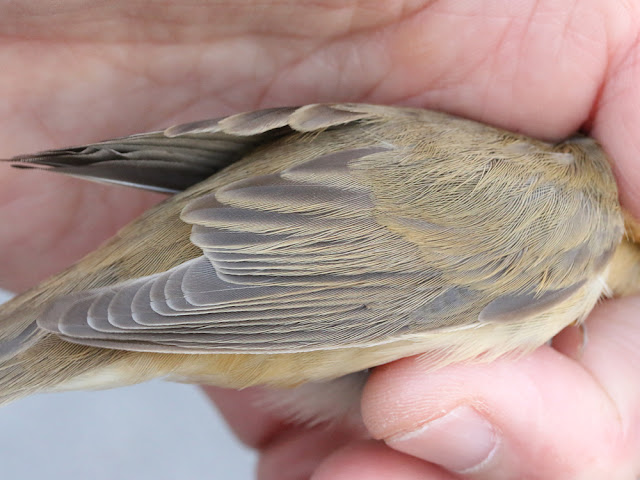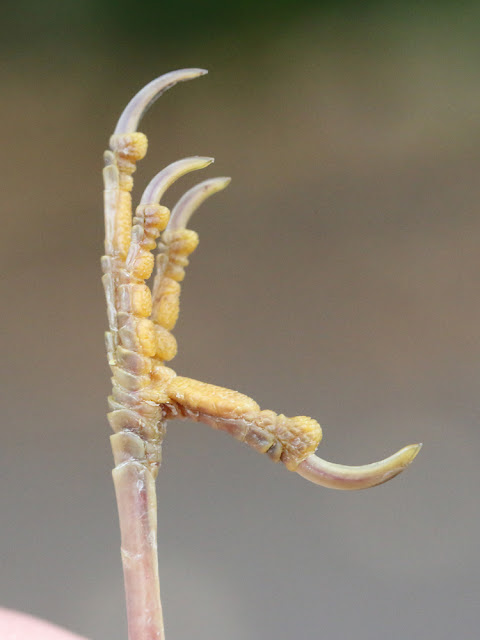Grey, damp and miserable for a good part of the day but oddly interesting nonetheless with anticipation of things maybe just about to happen - they never really did! - on land and sea. It was too wet through most of the morning for any serious birding but some sea passage developed during the afternoon that included 42 Balearic Shearwaters, 3 Arctic Skuas and singles of Storm Petrel and Great Skua off the Bill. The land didn't get thorough coverage but 2 Grasshopper Warblers and a Pied Flycatcher at the Bill and 24 Turnstones, 4 Black-tailed Godwits, 3 Knot, 2 Sanderling, 2 Redshanks and a Whimbrel at Ferrybridge were among the rewards for those that tried.
This afternoon's Black-tailed Godwits at Ferrybridge © Pete Saunders:
And back to last Sunday morning - 27th August - for more on the Marsh Warbler. Dawn was just breaking very spectacularly when Mark Cutts hot-footed back from Culverwell with one of his first captures of the day...
...to our eyes we were utterly underwhelmed when we took this acro from the bag - in the really warm light it looked rufousy and Reed Warbler was the obvious answer; however, everyone else who saw it was instantly more impressed and all were seeing olive tones that our eyes were clearly not perceiving. Mark had already taken some measurements that looked to be pro-Marsh Warbler and our checking just confirmed this - wing length 69mm, notch on the 2nd primary 8mm; additionally, the primary projection was noticeable long, the 2nd primary notch fell more or less level with the 7th primary, the bill was short and deep, the toes were short and strong-looking, the legs were yellowish, there was a creamy-yellow wash to the underparts...everything really did look to be backing up an ID as Marsh.
Inevitably, one or two contour feathers were dislodged during the measuring/photographing process and these'll no doubt eventually furnish us with chapter and verse on the bird's genes but for the time being what an interesting bird that during a busy session we could quite easily have passed off at first glance as a Reed before the wing length alone would have halted us in our tracks! Assuming the feathers don't tell a different story, this was our first August Marsh Warbler - likely the time of year when they're most difficult. Spring adults should be relatively straightforward and our experience of later autumn birds - we've been fortunate enough to handle/see literally thousands in Kenya where they pass through during November/December - is that they're usually much more obviously olive-toned by that time. Here are a few in-field Marsh Warblers from Kenya last November (the second bird is a first-winter and the third an adult; the other two are most likely also adults but there's not quite enough detail visible to be absolutely sure) © Martin Cade:











